I am trying to understand how Kalman Filter for non-linear system works. While searching for an example, I cam across this good basic example.
import numpy as np
import pylab as pl
import pandas as pd
from pykalman import UnscentedKalmanFilter
# initialize parameters
def transition_function(state, noise):
a = np.sin(state[0]) + state[1] * noise[0]
b = state[1] + noise[1]
return np.array([a, b])
def observation_function(state, noise):
C = np.array([[-1, 0.5], [0.2, 0.1]])
return np.dot(C, state) + noise
transition_covariance = np.eye(2)
random_state = np.random.RandomState(0)
observation_covariance = np.eye(2) + random_state.randn(2, 2) * 0.1
initial_state_mean = [0, 0]
initial_state_covariance = [[1, 0.1], [-0.1, 1]]
# sample from model
kf = UnscentedKalmanFilter(
transition_function, observation_function,
transition_covariance, observation_covariance,
initial_state_mean, initial_state_covariance,
random_state=random_state
)
states, observations = kf.sample(50, initial_state_mean)
# estimate state with filtering and smoothing
filtered_state_estimates = kf.filter(observations)[0]
smoothed_state_estimates = kf.smooth(observations)[0]
# draw estimates
pl.figure()
lines_true = pl.plot(states, color='b')
lines_filt = pl.plot(filtered_state_estimates, color='r', ls='-')
lines_smooth = pl.plot(smoothed_state_estimates, color='g', ls='-.')
pl.legend((lines_true[0], lines_filt[0], lines_smooth[0]),
('true', 'filt', 'smooth'),
loc='lower left'
)
pl.show()
This code produces the following graph.
However,for my experiment - I have created a very small time series data ready with three columns formatted as follows. The full dataset is attached here for reproduciability.
time X Y
0.040662 1.041667 1
0.139757 1.760417 2
0.144357 1.190104 1
0.145341 1.047526 1
0.145401 1.011882 1
0.148465 1.002970 1
.... ..... .
Instead of using the random values as shown in the code, how can we input from the CSV file I attached? Here is my approach, but it doesn't seem to workout for me and I would appreciate for any help.
df = pd.read_csv('testdata.csv')
pd.set_option('use_inf_as_null', True)
df.dropna(inplace=True)
X = df.drop('Y', axis=1)
y = df['Y']
d1= np.array(X)
d2 = np.array(y)
